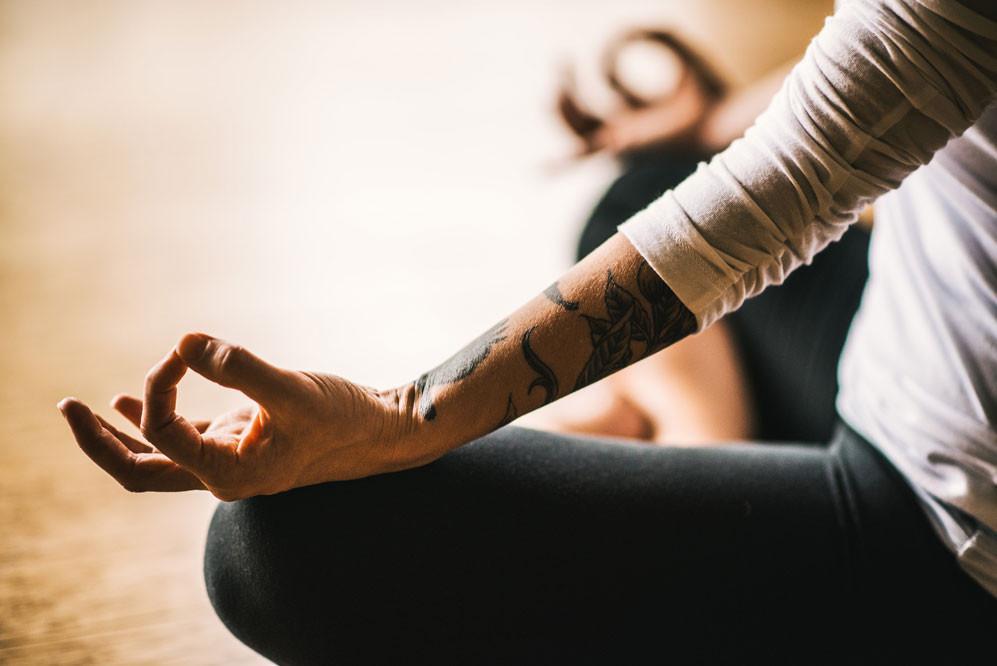Meditation 101: Techniques, Benefits, and a Beginner’s How-to

by: Inner IDEA
How To Meditate Effectively with Guided Meditation Tips for Beginners
Meditation is an approach to training the mind, similar to the way that fitness is an approach to training the body. But many meditation techniques exist — so how do you learn how to meditate?
“In Buddhist tradition, the word ‘meditation’ is equivalent to a word like ‘sports’ in the U.S. It’s a family of activities, not a single thing,” University of Wisconsin neuroscience lab director Richard J. Davidson, Ph.D., told The New York Times. And different meditation practices require different mental skills.
It’s extremely difficult for a beginner to sit for hours and think of nothing or have an “empty mind.” We have some tools such as a beginner meditation DVD or a brain-sensing headband to help you through this process when you are just starting to learn how to best meditate. In general, the easiest way to begin meditating is by focusing on the breath. An example of one of the most common approaches to meditation is concentration.
Concentration Meditation
Concentration meditation involves focusing on a single point. This could entail following the breath, repeating a single word or mantra, staring at a candle flame, listening to a repetitive gong, or counting beads on a mala. Since focusing the mind is challenging, a beginner might meditate for only a few minutes and then work up to longer durations.
In this form of meditation, you simply refocus your awareness on the chosen object of attention each time you notice your mind wandering. Rather than pursuing random thoughts, you simply let them go. Through this process, your ability to concentrate improves.
Mindfulness Meditation
Mindfulness meditation encourages the practitioner to observe wandering thoughts as they drift through the mind. The intention is not to get involved with the thoughts or to judge them, but simply to be aware of each mental note as it arises.
When you meditate through mindfulness meditation, you can see how your thoughts and feelings tend to move in particular patterns. Over time, you can become more aware of the human tendency to quickly judge an experience as good or bad, pleasant or unpleasant. With practice, an inner balance develops.
In some schools of meditation, students practice a combination of concentration and mindfulness. Many disciplines call for stillness — to a greater or lesser degree, depending on the teacher.
Other Meditation Techniques
There are various other meditation techniques. For example, a daily meditation practice among Buddhist monks focuses directly on the cultivation of compassion. This involves envisioning negative events and recasting them in a positive light by transforming them through compassion. There are also moving meditation techniques, such as tai chi, qigong, and walking meditation.
Benefits of Meditation
If relaxation is not the goal of meditation, it is often a result. In the 1970s, Herbert Benson, MD, a researcher at Harvard University Medical School, coined the term “relaxation response" after conducting research on people who practiced transcendental meditation. The relaxation response, in Benson’s words, is “an opposite, involuntary response that causes a reduction in the activity of the sympathetic nervous system.”
Since then, studies on the relaxation response have documented the following short-term benefits to the nervous system:
- Lower blood pressure
- Improved blood circulation
- Lower heart rate
- Less perspiration
- Slower respiratory rate
- Less anxiety
- Lower blood cortisol levels
- More feelings of well-being
- Less stress
- Deeper relaxation
Contemporary researchers are now exploring whether a consistent meditation practice yields long-term benefits, and noting positive effects on brain and immune function among meditators. Yet it’s worth repeating that the purpose of meditation is not to achieve benefits. To put it as an Eastern philosopher may say, the goal of meditation is no goal. It’s simply to be present.
In Buddhist philosophy, the ultimate benefit of meditation is liberation of the mind from attachment to things it cannot control, such as external circumstances or strong internal emotions. The liberated or “enlightened” practitioner no longer needlessly follows desires or clings to experiences, but instead maintains a calm mind and sense of inner harmony.
How to Meditate: Simple Meditation for Beginners
This meditation exercise is an excellent introduction to meditation techniques.
- Sit or lie comfortably. You may even want to invest in a meditation chair or cushion.
- Close your eyes. We recommend using one of our Cooling Eye Masks or Restorative Eye Pillows if lying down.
- Make no effort to control the breath; simply breathe naturally.
- Focus your attention on the breath and on how the body moves with each inhalation and exhalation. Notice the movement of your body as you breathe. Observe your chest, shoulders, rib cage, and belly. Simply focus your attention on your breath without controlling its pace or intensity. If your mind wanders, return your focus back to your breath.
Maintain this meditation practice for two to three minutes to start, and then try it for longer periods.
After you have found an effective way to meditate, browse Gaiam's Meditation Shop for all the necessary products to help perfect your meditation techniques.
Also in Blog

Body Peace & Personal Empowerment

Yoga for Swimmers: Poses for Strength and Mobility

